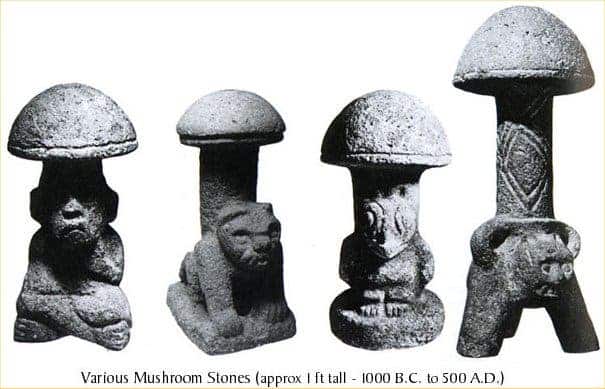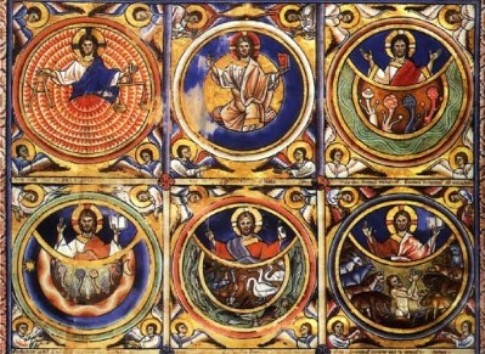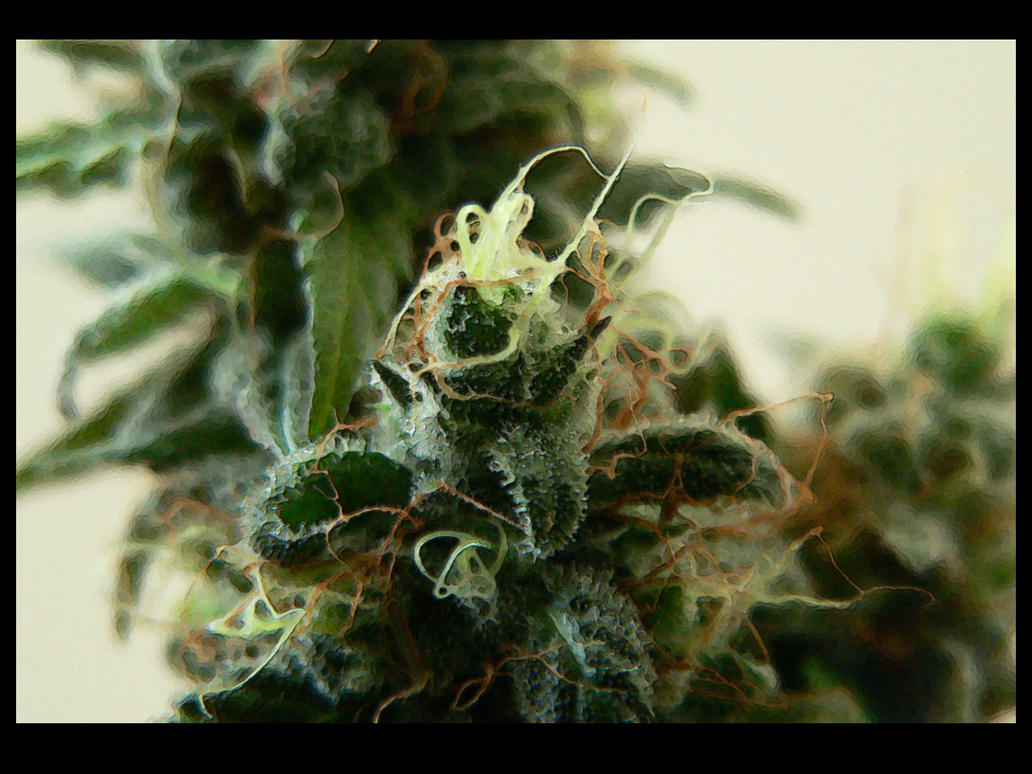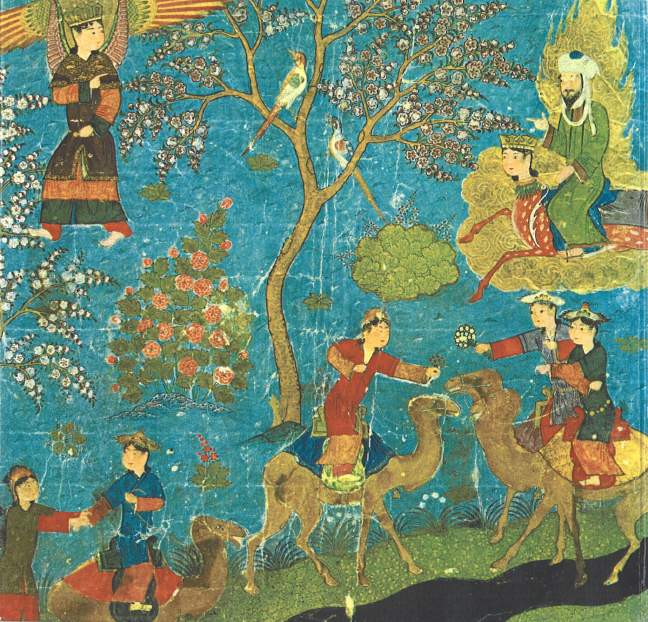Thursday, April 25, 2013
shamanism is entheogenesis - alkhemia concerns the alkahest...,
By
CNu
at
April 25, 2013
1 comments
![]()
Labels: alkahest , ancient , entheogenesis , History's Mysteries
Monday, April 08, 2013
prohibition scuttles promising medical science...,
By
CNu
at
April 08, 2013
6
comments
![]()
Labels: alkahest , narcoterror , neuromancy
Monday, March 25, 2013
TED censored Hancock's War on Consciousness talk...,
"The massive backlash against TED indicates something else of great importance. People are getting smarter" TED has permitted the debate after having removed the video.
By
CNu
at
March 25, 2013
8
comments
![]()
Labels: alkahest , Livestock Management
Sunday, March 03, 2013
the war against human nature strengthens the fear of one’s fellow man
By
CNu
at
March 03, 2013
5
comments
![]()
Labels: alkahest
Saturday, January 19, 2013
the eucharist
By
CNu
at
January 19, 2013
0
comments
![]()
Labels: alkahest , entheogenesis
Sunday, December 16, 2012
temple in man
"Generally speaking we know very little about Christianity and the form of Christian worship; we know nothing at all of the history and origin of a number of things. For instance, the church, the temple in which gather the faithful and in which services are carried out according to special rites; where was this taken from? Many people do not think about this at all. Many people think that the outward form of worship, the rites, the singing of canticles, and so on, were invented by the fathers of the church. Others think that this outward form has been taken partly from pagan religions and partly from the Hebrews. But all of it is untrue. The question of the origin of the Christian church, that is, of the Christian temple, is much more interesting than we think. To begin with, the church and worship in the form which they took in the first centuries of Christianity could not have been borrowed from paganism because there was nothing like it either in the Greek or Roman cults or in Judaism. The Jewish synagogue, the Jewish temple, Greek and Roman temples of various gods, were something quite different from the Christian church which made its appearance in the first and second centuries. The Christian church is—a school concerning which people have forgotten that it is a school. Imagine a school where the teachers give lectures and perform explanatory demonstrations without knowing that these are lectures and demonstrations; and where the pupils or simply the people who come to the school take these lectures and demonstrations for ceremonies, or rites, or 'sacraments,' i.e., magic. This would approximate to the Christian church of our times.
"The Christian church, the Christian form of worship, was not invented by the fathers of the church. It was all taken in a ready-made form from Egypt, only not from the Egypt that we know but from one which we do not know. This Egypt was in the same place as the other but it existed much earlier. Only small bits of it survived in historical times, and these bits have been preserved in secret and so well that we do not even know where they have been preserved.
"It will seem strange to many people when I say that this prehistoric Egypt was Christian many thousands of years before the birth of Christ, that is to say, that its religion was composed of the same principles and ideas that constitute true Christianity. Special schools existed in this prehistoric Egypt which were called 'schools of repetition.' In these schools a public repetition was given on definite days, and in some schools perhaps even every day, of the entire course in a condensed form of the sciences that could be learned at these schools. Sometimes this repetition lasted a week or a month. Thanks to these repetitions people who had passed through this course did not lose their connection with the school and retained in their memory all they had learned. Sometimes they came from very far away simply in order to listen to the repetition and went away feeling their connection with the school. There were special days of the year when the repetitions were particularly complete, when they were carried out with particular solemnity—and these days themselves possessed a symbolical meaning.
"These 'schools of repetition' were taken as a model for Christian churches—the form of worship in Christian churches almost entirely represents the course of repetition of the science dealing with the universe and man. Individual prayers, hymns, responses, all had their own meaning in this repetition as well as holidays and all religious symbols, though their meaning has been forgotten long ago."
G.I.Gurdjieff/ In search of the Miraculous / Chapter 15
By
CNu
at
December 16, 2012
0
comments
![]()
Labels: alkahest , History's Mysteries
Thursday, November 29, 2012
living memory historical dustup on the entheogenic fringe...,
By
CNu
at
November 29, 2012
0
comments
![]()
Wednesday, November 07, 2012
fist tap arnach...,
By
CNu
at
November 07, 2012
0
comments
![]()
Labels: alkahest , cognitive infiltration
Friday, July 20, 2012
Thursday, May 10, 2012
ego-disruptive = non-toxic/ ego-reinforcing = toxic
So for this conference, rather than discussing my usual subject (the endogenous entheogens, DMT and 5-MeO-DMT), I decided to consider the broad spectrum of different 'mood-enhancing' compounds available, and rather than considering how each particular 'drug' affects our bodies or our 'mental well-being' as most scientific studies would, I would instead rank each compound on how it affected our sense of Ego, our sense of "I". Since the total loss of Ego and the sense of "I" is the core of the transpersonal mystical experience (and I am an experiential-mystic at heart), I decided that I would assign each 'drug' its own 'Mystical Value', with the compounds that can induce the transpersonal state of total loss of Ego and Identity having the highest value (most value to an experiential mystic), while the compounds that reinforced or inflated the sense of the Ego would have the lowest. After ranking the various compounds (according to experiential reports in literature, EROWID, etc), it was obvious that the scale naturally descended by the chemical class of the compound -- tryptamine, phenethylamine, opiates, amphetamines, alcohol -- and that this corresponded to a noticeable increase in physical toxicity. My conclusion from ranking these various compounds by their unique 'Mystical Value' and then comparing their relative toxicity could then be expressed quite simply (as):
Oroc's First Law of Entheogens: The more a compound disrupts the Ego (the sense of 'I'), the physically safer (less toxic) that compound will be, while the more a 'drug' reinforces and inflates the sense of Ego, the more physically harmful (toxic) that compound will be.
For the purpose of elucidation, here is how I ranked the various compounds, along with my personal commentary on the effects of each compound, the relative toxicity, and a brief summary of its human history.
Warning! This table ranks PHYSICAL TOXICITY, and DOES NOT consider the well-documented potential PSYCHOLOGICAL SIDE-EFFECTS of psychedelic compounds that can occur for psychologically fragile people, from being unprepared for the psychedelic experience, or from taking too-high dosages of psychedelic compounds. All compounds in this table (other than alcohol) are currently illegal in the USA and most other countries.
By
CNu
at
May 10, 2012
10
comments
![]()
Labels: alkahest
Thursday, December 01, 2011
"scientists" say it may be alright...,
In their next incarnation, these drugs may help the psychologically wounded tune in to their darkest feelings and memories and turn therapy sessions into heightened opportunities to learn and heal.
"We're trying to break a social mind-set saying these are strictly drugs of abuse," said Rick Doblin, a public policy expert who founded the Multidisciplinary Assn. for Psychedelic Studies in 1986 to encourage research on therapeutic uses for medical marijuana and hallucinogens. "It's not the drug but how the drug is used that matters."
Regulators and medical researchers remain wary. But among at least some experts at the National Institutes of Health and the Food and Drug Administration, the shift in attitude "has been dramatic," Doblin said.
Researchers explored the usefulness of hallucinogenic agents as an adjunct to psychotherapy in the 1950s and '60s. But allegations that hallucinogens were used in government-funded "mind control" efforts, freewheeling experimentation by proponents like Dr. Timothy Leary, and the drugs' appeal to a generation in revolt quashed legitimate research for decades.
The thaw has been slow in coming. In 2008, Griffiths co-wrote a report in the Journal of Psychopharmacology comparing psilocybin with a placebo for people dealing with incurable diseases. Psilocybin resulted in "mystical experiences having substantial and sustained personal meaning and spiritual significance," according to the study, the first since 1972 to explore a hallucinogen's therapeutic value.
By
CNu
at
December 01, 2011
0
comments
![]()
Labels: alkahest
Wednesday, November 30, 2011
Decagonal and Quasi-Crystalline Tilings in Medieval Islamic Architecture
By
CNu
at
November 30, 2011
0
comments
![]()
Labels: alkahest , azoth , History's Mysteries
Monday, October 24, 2011
the prophet (PBUH) ridin too?
 |
| Mohammed meets the prophets Ismail, Is-hak and Lot in paradise. From the Apocalypse of Muhammad, written in 1436 in Herat, Afghanistan (now in the Bibliotheque Nationale, Paris). |
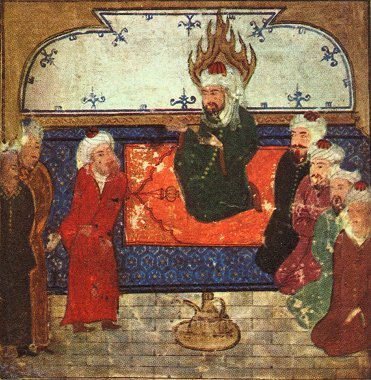 In the above images, Muhammad is seen riding the red and white creature, again the colors of the Amanita mushroom, in his shamanic night journeyisra' and ascension to heaven mi'raj reminiscent of the ascent of Arda Viraf who takes a narcotic and takes a visionary flight through heaven and hell (Seguy 1977). This representation of Buraq may indicate that regional cults viewed the Islamic revelation through their own shamanic traditions or that Islam retained the ritual heritages of the ancient world. These traditions would be enshrouded in the mysteries of Shia gnosis, alchemy and Sufism that spread into Europe. The other image depicts Imam Ali on a similar creature with the red and white colors and in a scene entitled “Gabriel Shows Ali’s Valor to the Prophet” from the 15th century Persian epic of Ali, the Khavaran Nameh, which shows his steed in these colors particularly in scenes of battle where it is grey in other scenes though more research is needed to fully develop these curious depictions of the changing mounts (Birjandi 2004). Another uncle of the Prophet Muhammad is Amir Hamza, whose folktales date back to the time of the Prophet and whose exploits unite Chinese, Indian Persian, Greek and Arabian cultures, also rides a similarly described winged-demon steed Ashqar Devzad (Lakhnavi and Bilgrami 2007). This series of tales involves treasures under trees and occult lore of the Prophet Khizir and Imam Ali (even before he was born) in aiding in battles and traveling to the land of thejinns for temporal and spiritual jihad for the True Faith anticipating the coming of the Prophet Muhammad.
In the above images, Muhammad is seen riding the red and white creature, again the colors of the Amanita mushroom, in his shamanic night journeyisra' and ascension to heaven mi'raj reminiscent of the ascent of Arda Viraf who takes a narcotic and takes a visionary flight through heaven and hell (Seguy 1977). This representation of Buraq may indicate that regional cults viewed the Islamic revelation through their own shamanic traditions or that Islam retained the ritual heritages of the ancient world. These traditions would be enshrouded in the mysteries of Shia gnosis, alchemy and Sufism that spread into Europe. The other image depicts Imam Ali on a similar creature with the red and white colors and in a scene entitled “Gabriel Shows Ali’s Valor to the Prophet” from the 15th century Persian epic of Ali, the Khavaran Nameh, which shows his steed in these colors particularly in scenes of battle where it is grey in other scenes though more research is needed to fully develop these curious depictions of the changing mounts (Birjandi 2004). Another uncle of the Prophet Muhammad is Amir Hamza, whose folktales date back to the time of the Prophet and whose exploits unite Chinese, Indian Persian, Greek and Arabian cultures, also rides a similarly described winged-demon steed Ashqar Devzad (Lakhnavi and Bilgrami 2007). This series of tales involves treasures under trees and occult lore of the Prophet Khizir and Imam Ali (even before he was born) in aiding in battles and traveling to the land of thejinns for temporal and spiritual jihad for the True Faith anticipating the coming of the Prophet Muhammad.
By
CNu
at
October 24, 2011
2
comments
![]()
Labels: alkahest , azoth , entheogenesis
Wednesday, October 12, 2011
the forbidden fruit...,
 Salon | It’s fascinating to juxtapose America’s reverence for Steve Jobs’ accomplishments and its draconian drug policy with this, from the New York Times‘ obituary of Jobs:
Salon | It’s fascinating to juxtapose America’s reverence for Steve Jobs’ accomplishments and its draconian drug policy with this, from the New York Times‘ obituary of Jobs:[Jobs] told a reporter that taking LSD was one of the two or three most important things he had done in his life. He said there were things about him that people who had not tried psychedelics — even people who knew him well, including his wife — could never understand.Unlike many people who have enjoyed success, Jobs is not saying that he was able to succeed despite his illegal drug use; he’s saying his success is in part — in substantial part — because of those illegal drugs (he added that Bill Gates would “be a broader guy if he had dropped acid once”). These quotes (first published by a New York Times reporter) have been around for some time but have been only rarely discussed in the recent hagiographies of Jobs: a notable omission given that he himself praised those experiences as an integral part of his identity and one of the most important things he ever did. A surprisingly good Time Magazine article elaborates on this Jobs-LSD connection further:
The paradoxes of love have perhaps never been clearer than in our relationships with Apple products — the warm, fleshy desire we feel for such cold, hard, glassy objects. But Jobs knew how to inspire material lust. He knew that consumers want something that not only sparkles and awes, but also feels accessible, easy to use, an object with which we want to merge and to feel one and the same. . . .America’s harsh prohibitionist drug policies are grounded in the premise that the prohibited substances have little or no redeeming value and cannot be used without life-destroying consequences. Yet the evidence of its falsity is undeniable. Here is one of the most admired men in America, its greatest contemporary industrialist, hailing one of the most scorned of these substances as integral to his success and intellectual and personal growth. The current President commendably acknowledged cocaine and marijuana use while there is evidence suggesting the prior President also used those substances. One of America’s most accomplished athletes was caught using marijuana at the peak of his athletic achievements. And millions upon millions of American adults have consumed some or many of those criminally prohibited substances, and themselves will say (like Jobs) that they had important and constructive experiences with those drugs or know someone who did.
Not coincidentally, that’s how people describe the experience of taking psychedelic drugs. It feels profoundly artificial yet deeply real, both high-tech and earthy-crunchy, human and mystically divine — in a word, transcendent. Jobs had this experience. . . . As attested by the nearly spiritual devotion so many consumers have to Jobs’ creations, the former Apple chief (and indeed many other top technology pioneers) appeared to have found enduring inspiration in LSD. Research shows that the psychedelic experience is, in fact, long lasting: a new study published last week found that people who took magic mushrooms (psilocybin) had long-term personality changes, becoming more open, more curious, more intellectually engaged and more creative. These personality shifts persisted more than a year after taking the drugs.
By
CNu
at
October 12, 2011
5
comments
![]()
Thursday, July 07, 2011
i dunno if I'm with you on entheogens though...,
 |   |
Yeah PK Dick's characters keep zoning out and seeing ancient Rome around them, which sounds pretty much right to me. I dunno if I'm with you on the entheogens though, broski. | Aight then, you tell me what was going on in the mysteries, across time, cultures, languages, and a fairly sizeable geography - that bound all of these up together in a continuous skein of dying god symbolism, values, and praxis? |
By
CNu
at
July 07, 2011
34
comments
![]()
Labels: alkahest , azoth , eucharist , strong wine
Elite Donor Level Conflicts Openly Waged On The National Political Stage
thehill | House Ways and Means Committee Chair Jason Smith (R-Mo.) has demanded the U.S. Chamber of Commerce answer questions about th...
-
theatlantic | The Ku Klux Klan, Ronald Reagan, and, for most of its history, the NRA all worked to control guns. The Founding Fathers...
-
Video - John Marco Allegro in an interview with Van Kooten & De Bie. TSMATC | Describing the growth of the mushroom ( boletos), P...
-
Farmer Scrub | We've just completed one full year of weighing and recording everything we harvest from the yard. I've uploaded a s...

